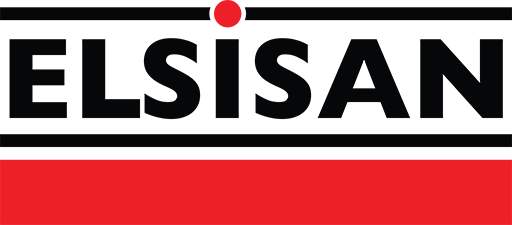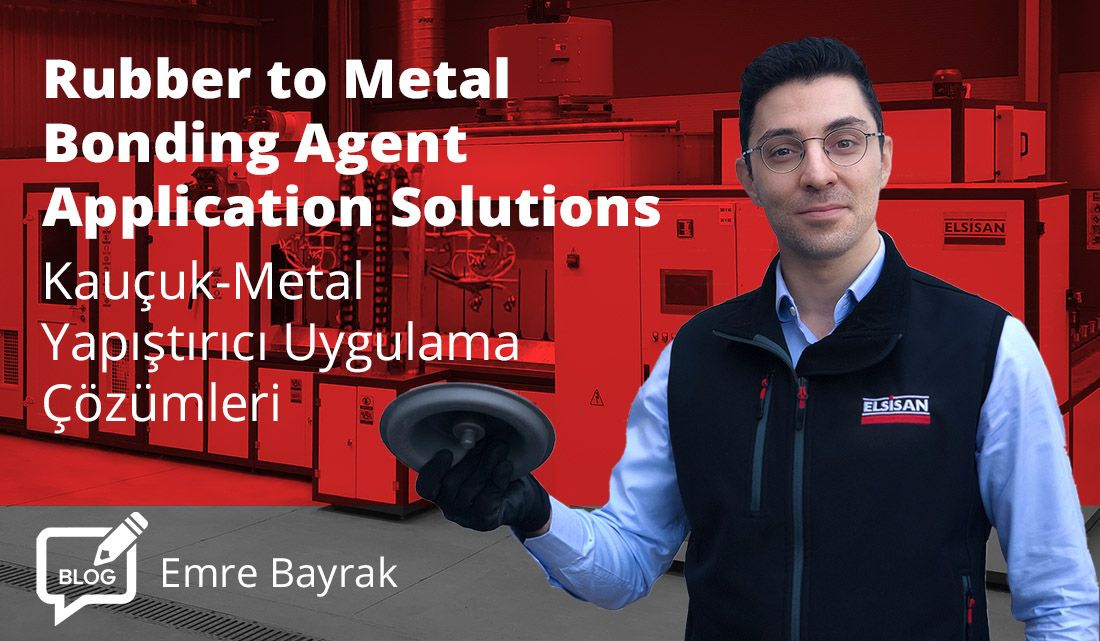As Elsisan, we offer many different options for our customers’ needs in our rubber metal bonding agent applications.(Rubber to metal bonding agents also known with different products names such as Chemosil, Chemlok, Megum) Some of our application solutions for these bonding agents are manual while some solutions are completely automatic application systems.
In order to offer the most suitable and economical solution to our customers, firstly the answers for following questions needs to be provided:
THINGS TO KNOW BEFORE STARTING:
-
Dimensions of the parts and application areas:
Whether the part has a surface that will not be painted or has a surface to be masked is important when proposing a solution. In addition, the application of what we call 2-dimensional parts, that is, parts with little or no depth, includes different application methods compared to the 3-dimensional parts whose all surfaces will be painted.
For 2-dimensional parts (with little or no depth), generally belt conveyed (horizontal type) application solutions are offered, while for 3-dimensional parts, solutions with ground or overhead conveyors are preferred. Other than those two solutions, when it is requested to apply agent to all inner and outer surfaces of the parts, dipping type solutions are offered. In this solution the application can be made by dipping the suspended parts into tanks. -
Capacity:
Capacity is critical in understanding whether you need manual system, semi-automatic or automatic system solutions. At this point, making the right choice will significantly affect the investment and operating costs of the customer. -
Factory installation area and part loading-unloading methods:
Depending on the area to be installed in the factories, more compact designs can be preferred in automatic application solutions.
The part loading and unloading area plays an important role in the designs we offer to our customers. While in some companies, our customers prefer solutions that a single person can do loading and unloading from only one area. Some of our customers demand larger areas and sometimes lift-assisted loading solutions for loading heavy and large parts. At the same time, automatic loading and unloading solutions can be integrated into the design according to the demands of our customers, thus allowing spontaneous transition between different lines.
MODEL TYPES:
Manual Solution- KMK Series:
Manual rubber to metal bonding agent application solutions are done with water curtain spray booths. The application is done manually with a gun application by the operator. Overspray molecules are caught and accumulated in water by means of water curtains and nozzles. Other paint particles that are not caught by the water curtain are caught by separators in the suction section, thus preventing them from reaching the fan and being thrown out.
There is a tray in the cabinet to place the parts. The table is rotated manually by the operator. With the help of the hot air blowing pipes on the application area, the drying process is accelerated.
Visit KMK product page by clicking here
Semi Automatic Solution – KSO Series:
Compared to the manual solution, a 2-axis automatic application gun is used in this semi-automatic model. The table on which the parts are placed is also automatically rotated. The water curtain functions similarly to manual cabin to capture overspray particles. Other paint particles that are not caught by the water curtain are caught by separators in the suction section, thus preventing them from reaching the fan and being thrown out. With the help of the hot air blowing pipes on the application area, the drying process is accelerated.
Visit KSO product page by clicking here
Fully Automatic Application Solution with Belt Conveyor – OKM-H Series:
OKM-H series are used to apply rubber to metal bonding agent to 2-dimensional parts, that is, parts with no or less depth. The parts are placed on the tray and loaded on the horizontal conveyor. With the help of horizontally moving conveyor system, the parts are moved through preheating, primary application, drying, secondary application and cooking processes. Then parts are brought to the unloading area in a cooled state which are unloaded by the operator. The entire system can be instantly monitored and controlled from the control panel.
Fully Automatic Application Solution with Paternoster Type Conveyor – OKM-P Series:
The most important difference of the OKM-P model, which is very similar to the horizontal belt application(OKM-H Series), is that the unloading and loading points of the trays are made from the same area. In this way, the operator can load and unload from one side. At the same time, the fact that the baking process continues when the trays descend to the lower section of the conveyor, makes the machine more compact and allows the machine to occupy a smaller area in the factory. The application process is done as follows: The parts are placed on the tray and loaded on the horizontal conveyor. With the help of horizontally moving conveyor system, the parts are moved through preheating, primary application, drying, secondary application and cooking processes. Then parts are brought to the unloading area in a cooled state which are unloaded by the operator. The entire system can be instantly monitored and controlled from the control panel.
Visit OKM-P product page by clicking here
Fully Automatic Application Solution with Floor Conveyor – OKM-V Series:
The most important reason for choosing this model compared to our horizontal band models is that all surfaces of the parts will be circumferentially sprayed. Parts can be loaded into conveyor in two different ways. First solution is used for cylindrical parts, which are vertically loaded on top of each other while the second solution is used for parts with wider surface areas, which are loaded in circular fashion. Optionally, an internal paint gun can be added to paint inner surfaces of the parts.
Step by step moving conveyor takes parts through preheating, primary application, drying, secondary application and cooking processes. Then parts are brought to the unloading area in a cooled state which are unloaded by the operator. When the parts come in front of the application area, the parts are rotated, thus ensuring a homogeneous application. The entire system can be instantly monitored and controlled from the control panel.
Visit OKM-V product page by clicking here
Fully Automatic Application Solution with Dipping – OKM-D Series:
The dipping type application machine is designed for the parts that require bonding agent to be coated on the entire surface of parts. Firstly the parts are hanged on to the overhead conveyor from the loading area. Then parts go through preheating oven, primary coating tank, dripping area, drying oven, secondary coating tank, curing oven and unloading area. The entire system can be instantly monitored and controlled from the control panel.
Visit OKM-D product page by clicking here
Fully Automatic Application Solution with Rotary Coating Pan – BKM Series:
Rotary coating pans are ideal solution for small sized parts and parts that requires all their surfaces to be painted. The parts loaded into the pans, then parts are turned over by rotation and metal rubber bonding is applied to parts. Drying is done between the application processes and finally the application is completed. The entire system can be instantly monitored and controlled from the control panel.
Visit BKM product page by clicking here
Sludge Seperator Systems- BCA Series:
We recommend using Sludge Separator Systems to accelerate the operation and maintenance processes to our customer which use rubber to metal bonding applications. Sludge Separator systems can be connected to all water-based spray booths. Separator system automatically separates the paint sludge and keep the water used in the booth clean while minimizing maintenance costs. It also increases the application quality.
How Sludge Separator System works:
Sludge Separator Unit is connected to the Paint Machine with a pump. With the help of the pump, the paint-water mixture is transferred to separator system and dosed with the chemicals. The sludge in the paint-water mixture is floated on the water surface with the help of chemicals. Then the floating paint waste is accumulated and separated with the help of the pneumatically operated clamps. The water purified from paint particles in the existing Paint Sludge Separator Machine is sent back to the Paint Machine by gravity.
Visit BCA product page by clicking here
Reach Us For More Details and Offer Requests:
As Elsisan we have provided our rubber to metal bonding applications globally over the years. With the help of our global experiences we know how important it is for our customers to have the right solution and a machine they can rely on for many years.
For your requests, you can reach us via our website or by email at elsisan@elsisan.com .
Below you can find our customer references which we have provided our metal rubber bonding agent application solutions:

 TR
TR EN
EN























